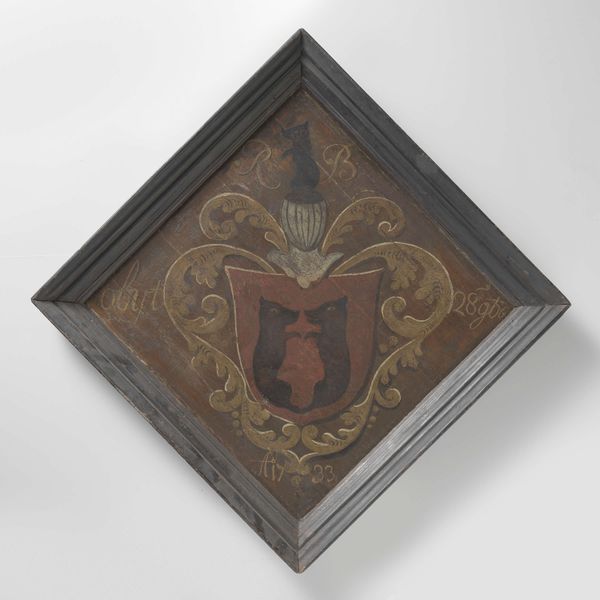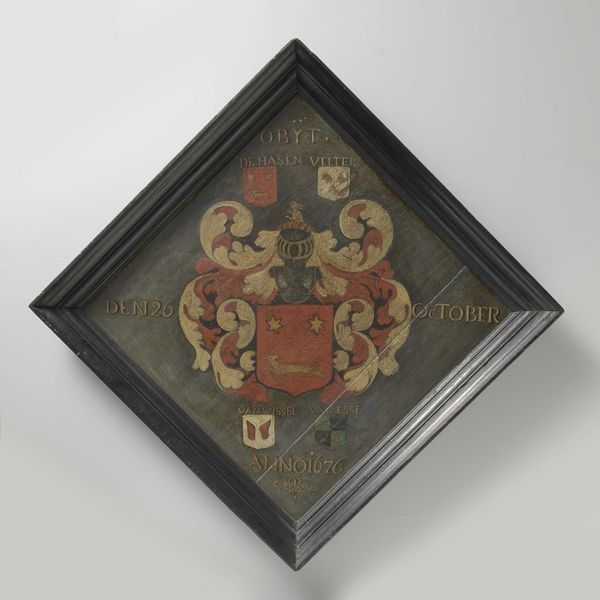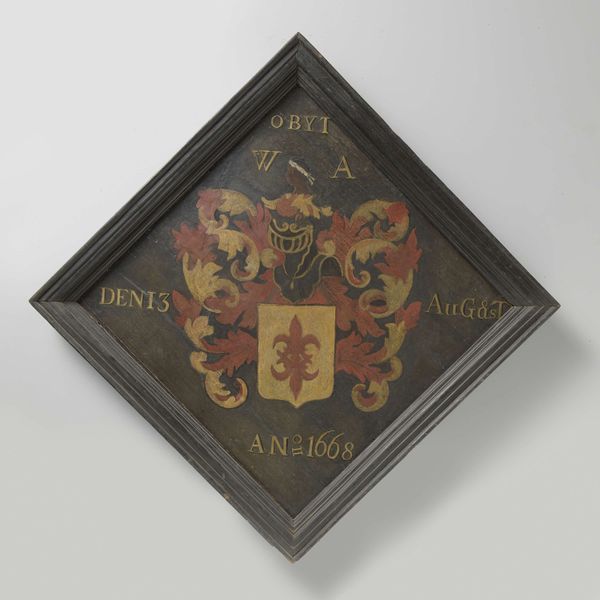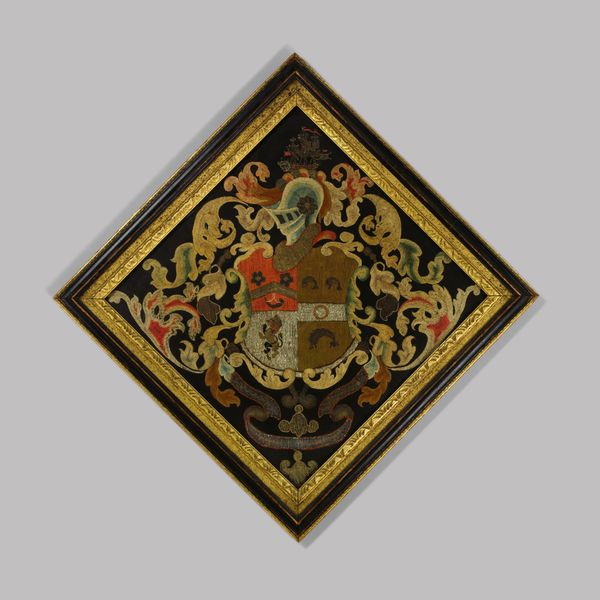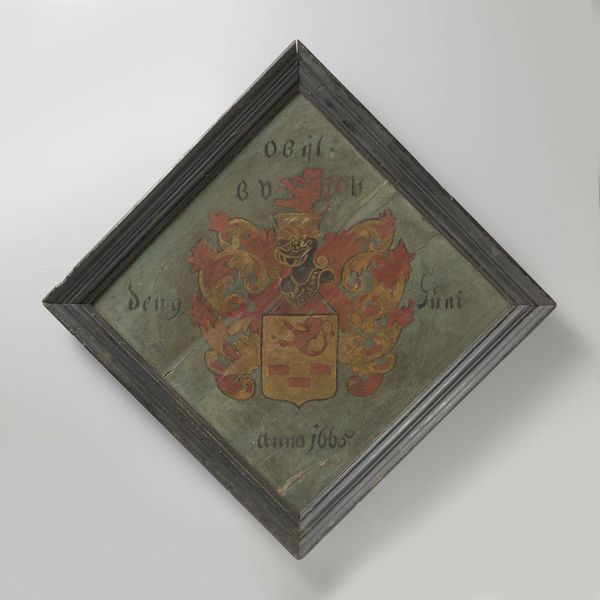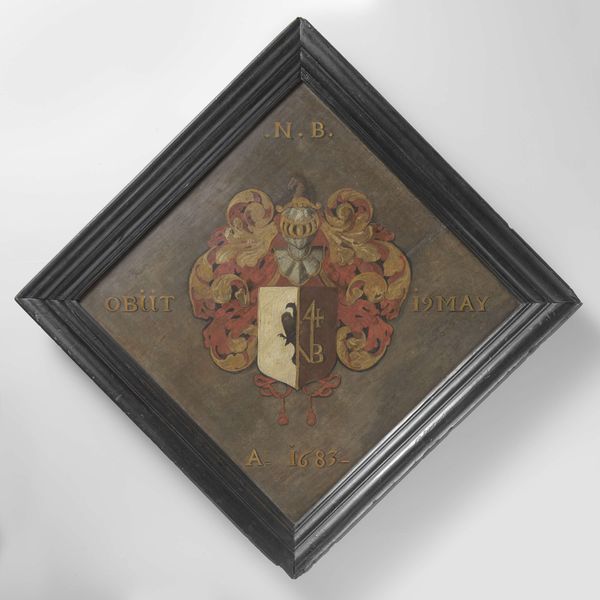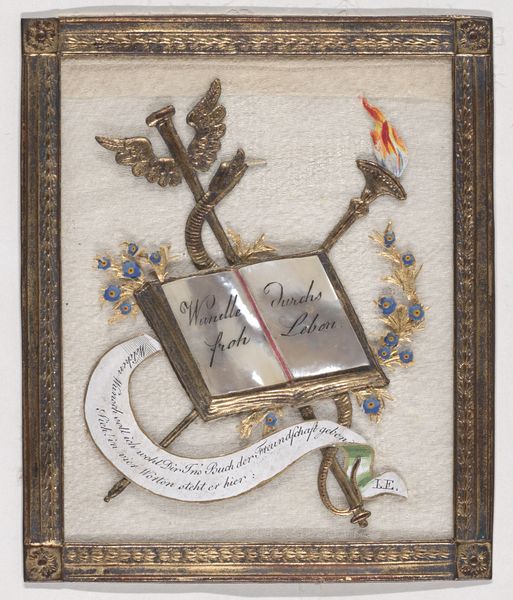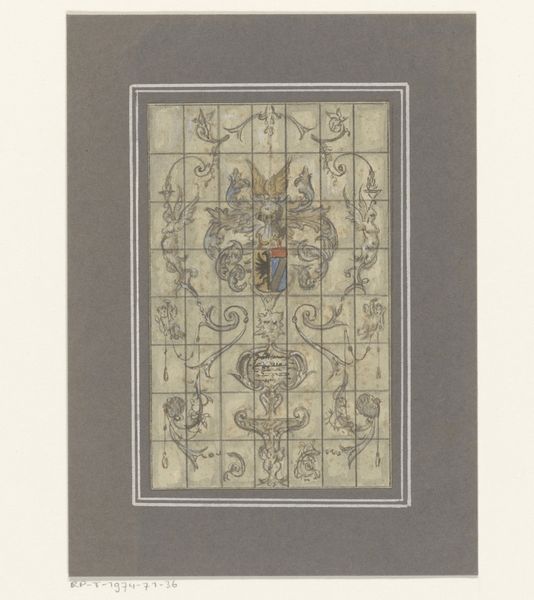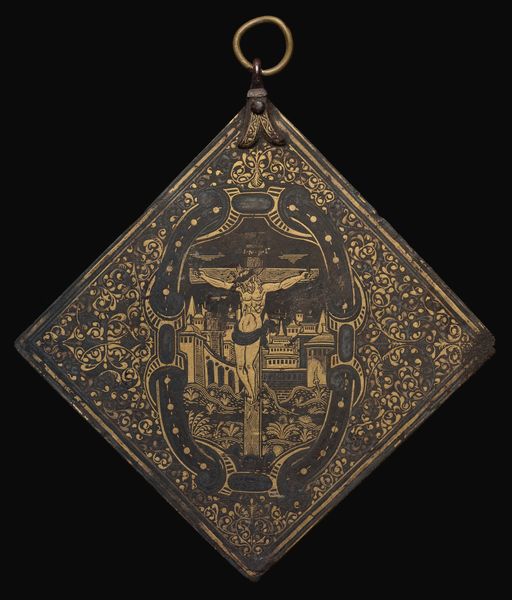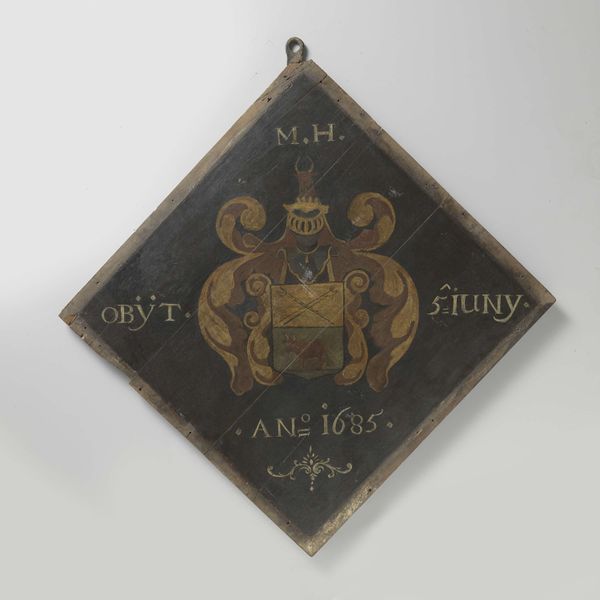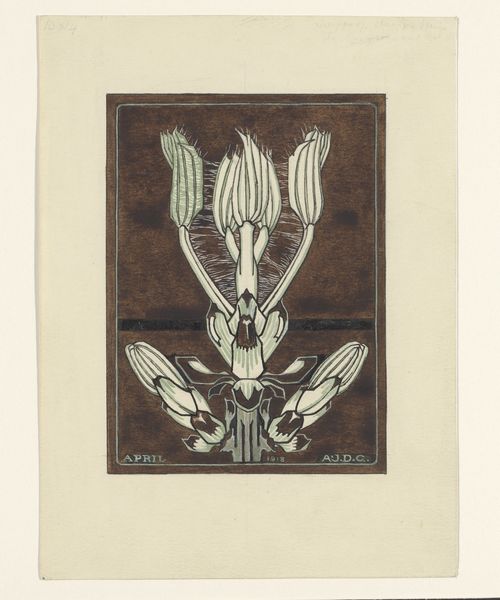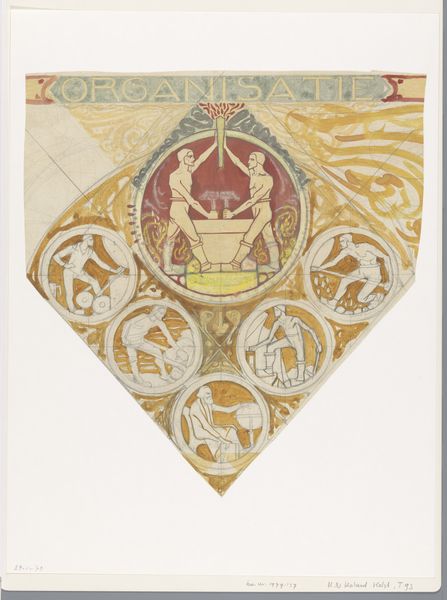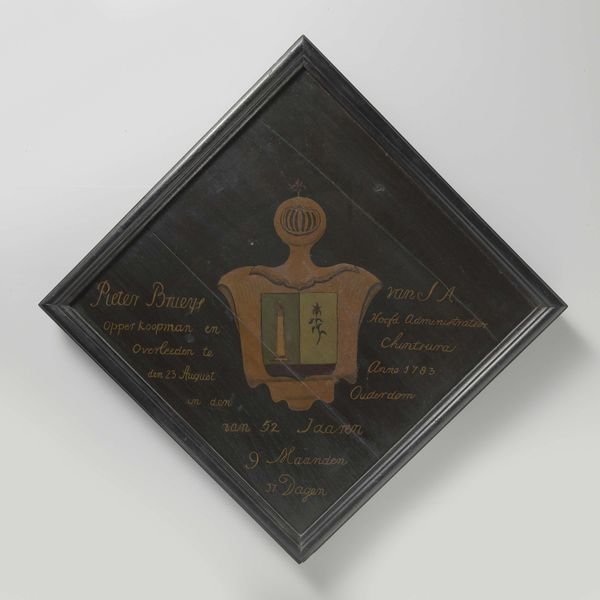
Dimensions: height 113 cm, width 79.8 cm, depth 3.5 cm
Copyright: Rijks Museum: Open Domain
Editor: This is "Grafbord van Laurentius de Blau," painted on panel sometime between 1674 and 1887. It strikes me as a kind of formal declaration. I'm curious about its purpose. What do you see in this piece? Curator: I see a carefully constructed symbol of status and lineage. Heraldry served a critical role in early modern European society. Think about how such images operated within a complex network of social hierarchies. It represents not just a family but its ambitions and its place in society. This Grafbord, or memorial board, likely played a role in solidifying the Blau family's position, perhaps after Laurentius' death. Editor: So, it’s about establishing and maintaining a family's image? Were these types of boards common? Curator: Absolutely. Consider the broader historical context. The Baroque period was marked by increasing urbanization and a growing merchant class, leading to more people seeking to assert their identity. Displays of coats of arms were very popular for members of privileged communities. And the art market catered to this social and cultural need. The choice of symbols is also crucial. Why a bull’s head? Why those acorns? Editor: Those details do seem pretty specific. So the image’s meaning isn’t just inherent, it’s tied to a larger web of social customs. I hadn't thought about how intertwined art and societal structure are. Curator: Exactly. Visual culture isn’t separate from, but rather interwoven with, these broader systems. This piece acts as both a marker of history, and a projection of cultural power. Editor: That is fascinating to consider. It definitely opens up a new perspective.
Comments
No comments
Be the first to comment and join the conversation on the ultimate creative platform.
